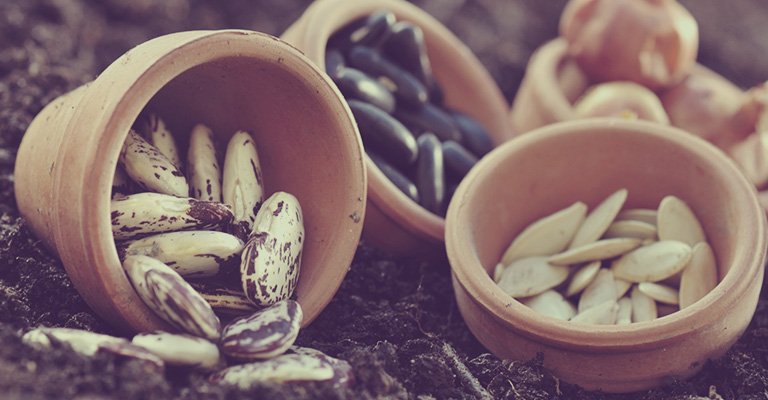
For many people, it's the preferred way to begin a garden. If you only draw on local resources of bedding and potted plants, you're likely missing a huge variety of plant types ... beautiful, healthy flowers and vegetables that are often only available as seed.
Many veteran gardeners prefer to grow from seed, for a number of reasons:
Gardeners who grow from seed also maintain their plants are healthier and hardier.
Your local garden center will likely have a broad selection of seeds in stock. They can help you choose the types best suited for your growing conditions, and usually have good information available on growing from seeds.
How to guide to start your seeds
Supplies:
Pick up a supply of growing trays and mini-pots at your garden center. Make sure they're the kind that allows good drainage. Also get some good quality potting soil or seed starting mixture.
Planting:
Two weeks before you're ready to transplant, "harden" your new seedlings by taking them outdoors for a few hours each day or place them in a cold frame.
Prepare your garden soil
It's a good idea to prepare your garden soil a couple of weeks ahead of planting, too. Tilling the soil early will fool weeds into germinating early, and you can then pull them to reduce competition with your seedlings. When there is no longer any risk of frost, take the seedlings out of the pots and plant them into the garden.
How to harvest your seeds
Perennials started from seed will usually re-grow larger the following spring, and spread rapidly if conditions favor their growth. You can also try harvesting seeds from your annual plants and vegetables (except for hybrid varieties) for replanting the following year. Dry the seeds slowly, and store them in a cool, dry place over winter. Then repeat the same planting steps outlined earlier.
Give seeds a try this spring. It's a great way to increase your gardening satisfaction ... and a good activity for children, too!
Subscribe to our newsletter to receive our gardening tips, news and more directly in your inbox! Fill in the form below. Please note that fields with an * are required.